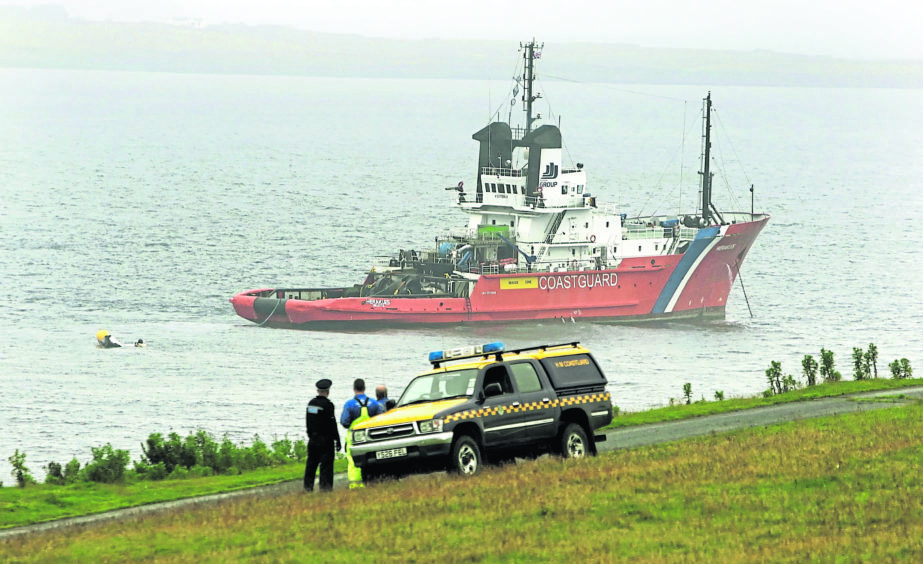
The “bravery” of both pilots in the moments after the crash was highlighted in the court ruling.
Sheriff Principal Derek Pyle said expert witnesses had praised co-pilot Alan Bell for his quick thinking in releasing the emergency flotation system which “probably saved lives”, as well as his actions to release the life rafts.
Regarding the commander, Sheriff Principal Pyle said: “Despite suffering from a serious back injury, Capt Martin Miglans insisted that he be the last survivor winched from the sea.”
The inquiry was told Capt Miglans was a very experienced North Sea helicopter pilot of 16 years with more than 10,000 hours of flying time.
His co-pilot Mr Bell had a total flying experience of more than 3,000 flying hours, but had completed his training on the L2 helicopter only six months before.
The pilots had flown together as a crew on several occasions.
The determination said: “As is required for all flights, Capt Miglans planned in advance his approach to Sumburgh.
“Because of the (misty)weather conditions, it was necessary to engage the autopilot. In broad terms there were two choices: in three-axes or four-axes.
“The most important difference between the two is that in four-axes the auto pilot controls the airspeed, while in three-axes that control can remain with the pilot.”
The sheriff principal ruled the cause of the crash was the ineffective monitoring of instruments, particularly regarding airspeed.
Although the Super Puma L2 was an upgraded model with four-axes, he said: “As was his custom, Capt Miglans selected to proceed in three-axes in a mode which allowed him to control the airspeed and he adopted a constant descent approach technique with reducing airspeed.
“The approach was proceeding satisfactorily until the helicopter reached 1,000ft above the mean sea level, when its flight path deviated from the planned vertical profile.
“The speed reached the planned speed of 80 knots at 625ft but continued to fall until it fell below the minimum operating limit of 70 knots and then down to less than 30 knots, which meant that the helicopter had entered a low energy state, which in turn compromised the auto pilot’s control of the flight path.
“By the time the helicopter had reached the minimum descent altitude of 300ft, it was too late for the commander to take remedial action.
“He attempted to increase the speed by applying the maximum collective pitch, but the helicopter had entered a vortex ring state which meant that it was bound to continue the descent until it crashed into the sea.
“The time was 5.17 pm.”
Sheriff Principal Pyle praised Mr Bell for having the “presence of mind” to engage the emergency flotation system before the crash.
“If he had not done so it is likely that more lives would have been lost,” he said.
“Both pilots were injured: Mr Bell a head injury due to having been leaning forward at impact (presumably because he was arming the flotation system), and the commander a serious back injury.
“All but two passengers managed with difficulty to escape through cabin windows.
“One passenger managed to escape but died prior to or immediately after reaching the surface.”
All the survivors were winched from the water – five directly from the sea, nine from the life raft.
Despite his severe injury, the commander insisted that he be the last survivor to be winched into a helicopter.
